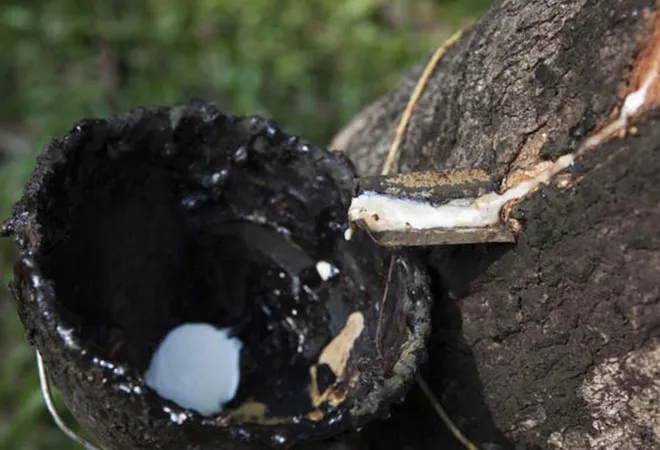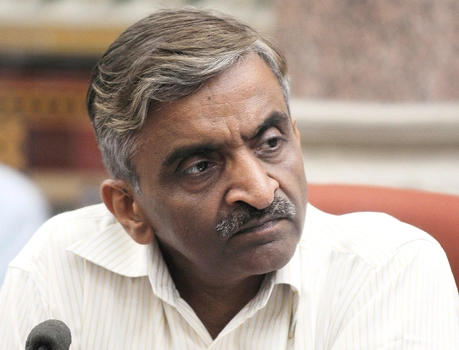-
CENTRES
Progammes & Centres
Location

Northeast Region of India (NER) has been a troubled spot ever since 1947, when India became free from foreign domination. One of the primary reasons for this disquiet in the NER has been the lack of basic infrastructure connecting the region to its main markets and trade gateways – both within India and the neighbourhood – leading to its economic insulation and the consequent constraints on its economic growth. Post partition of the Indian subcontinent, the NER lost the integration that it enjoyed with undivided Bengal, part of which, became East Pakistan, and also with the then Burma.
For the last few years, the Government of India has been striving hard to develop infrastructure, especially the abysmal transport linkages and connectivity that have sequestered and isolated the region not only from the rest of the country and the world, but also within itself. Agartala, the capital of the state of Tripura is now connected to the rest of Indian states by a direct, broad gauge railway line and it now boasts of a Rajdhani Express too. The premium train service gives Agartala affordable and seamless connectivity to markets in West Bengal, Assam, Bihar, Uttar Pradesh etc. through rail and road linkages. As several connectivity projects are underway in NER, the economic landscape of the region is expected to change dramatically.
In what could give a further fillip to national efforts towards the economic development of NER, the Government of India has provided its in-principle approval to establish a Special Economic Zone (SEZ) in Tripura at Sabroom, with a focus on agro-products. The in-principle approval to establish SEZ in Tripura should be linked with developments occurring in the natural rubber segment in India. Tripura is one of the prominent producers of natural rubber in the country. In the year 2018-19, Tripura accounted for a production of nearly 53,050 tonnes of natural rubber (about 8 percent of total production in the country). For the last few years, the state of Tripura has consciously provided policy efforts to develop the rubber cultivation in the state.
For some years now, the Government of India has been making efforts to enhance the domestic production of natural rubber in the country. Given its all-encompassing, cross-sectoral usage in the industry, rubber consumption, as correctly mentioned in the National rubber Policy 2019, is indeed representative of rubber-based industrial activity in the country. According to a report, the production-consumption deficit of natural rubber in the country rose to the tune of 463,000 tonnes between April 2018-January 2019. The Government of India and its agencies have therefore been seeking to increase the number of cultivated areas for rubber plantation in traditional and non-traditional areas. Additionally, the National Rubber Policy 2019 has provided a very comprehensive policy thrust to cater to the needs of Indian industry. The Policy mentions about “integrated strategies” between Centre and State, which essentially can be interpreted as coordinated efforts to augment natural rubber production. It was also reported that in lieu of the decline in domestic production from traditional areas, a study team from Auto Tyres Manufacturing Association (ATMA) had visited Tripura to explore possibilities for the state to enhance its production.
 Source : Press Information Bureau, 2019
Source : Press Information Bureau, 2019
Additionally, over the last few years, constant efforts are being made by Government of India to improve the connectivity within India’s NER. Under the Bharatmala Pariyojana and Pradhan Mantri Gram Sadak Yojana, plans are afoot to develop an economic corridor in the NER. Central funds are also being sanctioned to the state of Tripura to particularly expand the scope of Pradhan Mantri Gram Sadak Yojana. The second author of this article had a chance to travel within a few districts in Tripura in the year 2017. He saw first-hand, the well-constructed and maintained roads in the state. As these infrastructure projects in the coming years begin to bear fruition, it would further enable ease of conducting the agro-based and natural resources businesses in the state and the region. The setting up of smooth roads and railway connectivity will indeed enable other states in NER such as Assam, Nagaland, Meghalaya, Manipur, Arunachal Pradesh and Mizoram also to transport their natural rubber to Sabroom from where the same can be shipped to different destinations. In addition to the transport and connectivity projects, setting up the SEZ in Sabroom makes sense given the fact that the Palatana power plant in Tripura can enable availability of energy to support any energy-intensive commercial activity in the proposed SEZ.
Another reason that enables creation of such an agro-based SEZ is the fact that in the last one decade or so, Tripura has witnessed peace and stability due to reduction in insurgency. Recently, about 88 cadres of an insurgency outfit in Tripura are believed to have surrendered, thereby further boosting its credentials as a peaceful state. The setting up of an SEZ in Tripura, apart from carrying an economic message also has a symbolic value. It sends across a clear signal that genuine and credible efforts towards peace and early resolution of insurgencies and conflict in Northeast India and elsewhere would be rewarded with initiatives that will enable employment generation and development.
The state of Tripura, however, needs to now concentrate on a couple of important issues. To begin with, there is a need to substantially increase the number of skill development centres and improve the quality of educational institutions to enable gainful employment of the local youth. In order to augment Tripura’s production of natural rubber, Chief Minister of Tripura Biplab Deb has encouraged his people involved in rubber cultivation to incorporate the processes used by Kerala for rubber cultivation. Data available on rubber cultivation in India during 2018-19 indicates that the state of Kerala has accounted for 76 percent of India’s rubber production. If the production of other two southern states of Tamil Nadu and Karnataka is added, the southern region produces 85 percent of India’s rubber. Tripura’s contribution to natural rubber production comes to about 8 percent, while the rest of Northeast India contributes 6 percent. The SEZ at Sabroom will surely facilitate and catalyse the growth of India’s natural rubber production.
The focus of some of Government of India’s Skill Development initiatives in the NER could be directed to harmonise their efforts towards enabling creation of an adequate and skilled labour force to support the development and operationalisation of the proposed SEZ in Sabroom. The National Rubber Policy of 2019 mentions several plans for boosting skill development, particularly of tappers, in the rubber cultivation segment. The state of Tripura must coordinate its efforts with the Central Government in this regard to quantitatively and qualitatively enhance rubber cultivation in the state.
The views expressed above belong to the author(s). ORF research and analyses now available on Telegram! Click here to access our curated content — blogs, longforms and interviews.

Vivek Sahai is Distinguished Fellow at Observer Research Foundation in Mumbai, superannuated from the apex post of Chairman Railway Board in June 2011. An erstwhile ...
Read More +
Sanket Sudhir Kulkarni was Fellow at ORF's Mumbai Centre. Sanket's primary area of interest is studying geopolitics of energy trade. Also, Sanket closely monitors patterns ...
Read More +